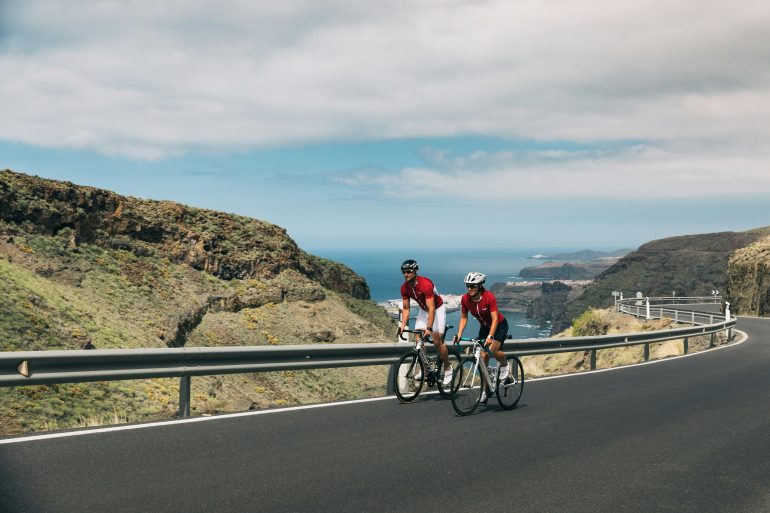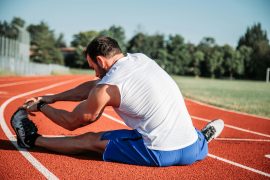Triathlon cycling is more than a simple transition from casual riding to competitive racing. It involves selecting the right equipment, refining technique, and structuring training in a way that maximises performance across multiple disciplines. Choosing the right triathlon bike is a significant step, and understanding how to progress from recreational cycling to serious racing can set the foundation for success. With the right approach, triathletes can find themselves well-prepared for race day challenges.
The Evolution of Triathlon Cycling
Triathlon bikes differ from standard road bikes in several key ways. The most obvious is their geometry. Tri bikes position riders in a more forward stance, with steeper seat tube angles that place the body weight over the bottom bracket. This position is intended to help save energy in the legs for the run portion that follows.
Aerodynamic frames with specially shaped tubes are designed to cut through the air more efficiently. Over the past two decades, these specialised machines have undergone notable progress. Early models were often modified road frames with clip-on aerobars.
Today, purpose-built triathlon bikes feature integrated designs where everything from the handlebars to the water bottles is designed to reduce drag. Technological advancements have also made triathlon bikes more widely available. Manufacturing innovations have helped lower the cost of carbon fibre frames, while entry-level models now incorporate many features once reserved for professional equipment. The popularity of triathlon continues to grow, with more athletes seeking specialised equipment for their training and competitions.
Finding Your First Triathlon Bike
Budget considerations play an important role when selecting a triathlon bike. Beginners might start with entry-level aluminium models, while enthusiasts often spend more for mid-range carbon options. Professional-grade machines can be significantly more expensive, especially with electronic shifting and premium wheelsets.
One common debate for newcomers centres on purchasing a dedicated triathlon bike or modifying a road bike. Road bikes remain the best all-rounders for daily use and group rides, yet triathlon bikes offer a race-specific advantage. Many new triathletes opt for clip-on aerobars because they can convert a familiar road bike into a more aerodynamic setup with a modest investment.
First-time buyers should focus on essential features rather than getting distracted by extras. A comfortable aero position, reliable shifting, and durable components matter more than electronic gadgets or ultra-lightweight parts that add cost without proportional benefits for beginners. The best bikes for triathletes balance core features with reasonable pricing, ensuring a smoother entry into the sport.
Common mistakes often stem from misunderstandings about fit and component prioritisation. Purchasing a bike with overly aggressive geometry can cause discomfort or back pain during longer races. Choosing the right fit ensures a better experience and supports gradual progress towards bigger race goals.
Key Triathlon Bike Components
Aerodynamic frame design stands as perhaps the most distinctive feature of a triathlon bike. These frames use specially shaped tubes with teardrop are intended to reduce drag. The difference between an aerodynamic frame and a standard road frame may help riders save valuable time during the cycling leg.
Integrated hydration and nutrition storage systems have become standard on modern triathlon bikes. These include frame-mounted water bottles positioned to minimise wind resistance, between-the-arms hydration systems, and special compartments for energy gels and bars. These integrations allow athletes to refuel without breaking their aerodynamic position.
The debate between electronic and mechanical shifting systems continues among triathletes. Electronic systems offer precise, reliable shifting with minimal maintenance, though at a higher price point. Mechanical systems provide good performance at a lower cost and are easier to repair in remote locations. Disc brakes have gained popularity for their consistent stopping power, while rim brakes remain lighter and easier to maintain.
Fitting and Positioning
Professional bike fitting is one of the smartest investments a triathlete can make. Beyond comfort, proper fitting helps prevent injuries that can disrupt training and ensures efficient power transfer. A detailed fitting session may require an additional expense but can transform the riding experience.
Triathlon positioning differs greatly from road bike setups. The forward-rotated pelvis and lower torso angle create a more aerodynamic profile but require good core strength and flexibility. This position is intended to reduce frontal area while allowing the rider to save leg muscles for the following run segment.
The result of a proper fit extends beyond comfort and leads to better performance. A carefully optimised riding position may help improve power output and reduce aerodynamic drag, translating into more efficient cycling and improved endurance on race day.
Training Progression for Triathlon Cycling
Building a structured training plan helps transition from casual riding to focused triathlon preparation. Beginners can aim for steady endurance rides of moderate duration, gradually increasing time and introducing intervals as fitness improves. Starting with familiar park loops before moving to routes that mirror race conditions helps prepare mind and body.
Brick workouts, which combine cycling immediately followed by running, play an important role in triathlon training. These sessions help the body transition between disciplines and adjust to running on fatigued cycling legs. Starting with short combinations provides the foundation for race-specific preparation.
Race day preparation includes a thorough bike check before the event. This inspection should cover tyre condition, brake function, shifting accuracy, and all bolts and fasteners. As training volume increases, recovery strategies become even more important. Active recovery rides at very low intensity are often used to increase blood flow and support muscle repair, ensuring consistency in training.
Staying Focused on Long-Term Progress
Every triathlete progresses differently, but staying consistent with training and refining technique leads to steady improvement. The combination of a well-chosen triathlon bike, proper fitting, and smart training provides a strong foundation for success. As athletes progress, upgrading components or investing in one of the best triathlon bikes can further enhance performance, especially as race distances increase.
Preparing for Your Next Race
Reaching new milestones in triathlon cycling is a rewarding process that combines equipment, training, and discipline. Investing in the right bike, refining riding position, and sticking to a structured plan all contribute to a better racing experience. Whether preparing for a first sprint event or an Ironman, consistent practice ensures athletes can face the challenge with confidence. Now is the time to assess your goals and take the steps that will set you up for success on race day.





